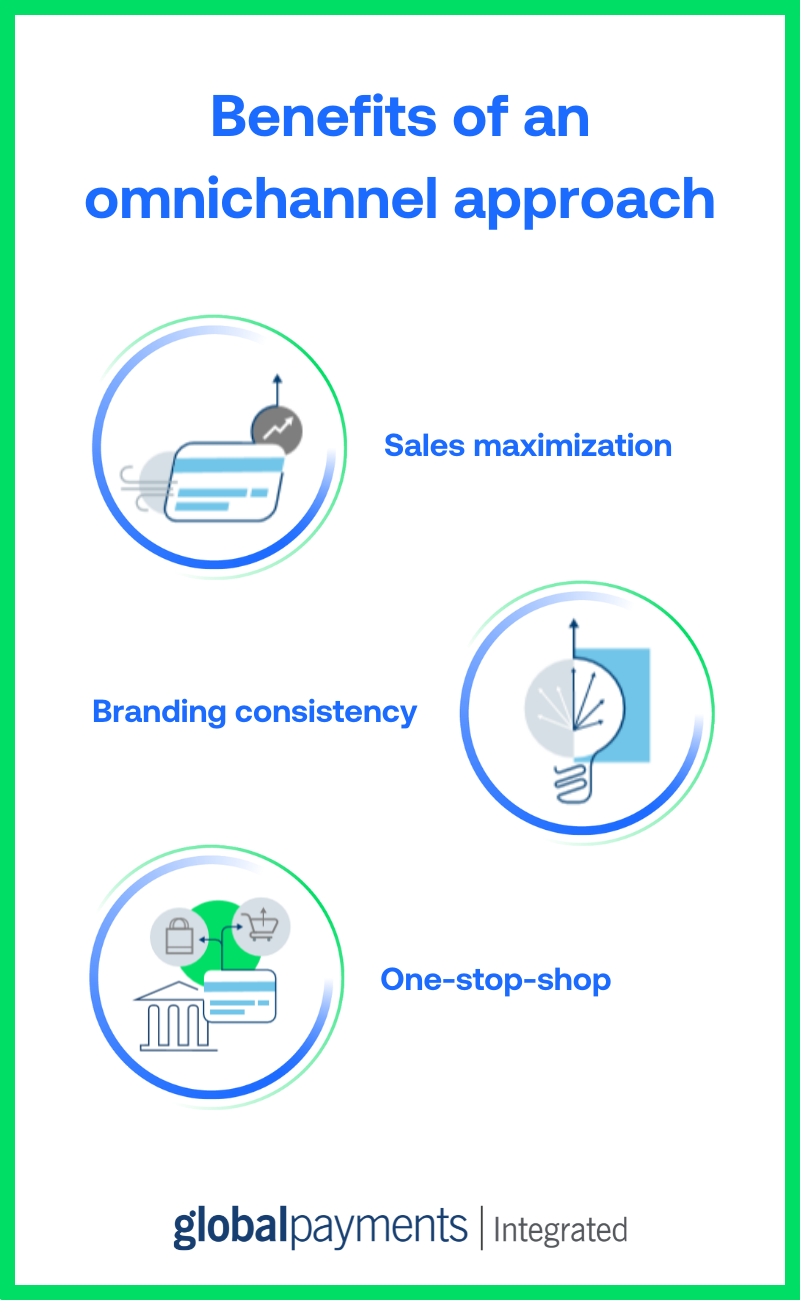Consumer purchasing preferences have drastically changed - and businesses have, too. Most people are utilizing digital payments much more frequently in 2021, and merchants must be prepared to accommodate those needs, whether they are coming from consumers or other businesses.
A strong omnichannel retailing strategy that delivers a consistent brand experience across touchpoints is critical. The number of potential touchpoints - physical stores, mobile apps, social media, and more - can be overwhelming for merchants, which is why independent software vendors (ISVs) that offer robust embedded commerce solutions are valuable partners for merchants.
Commerce enablement solutions should have a streamlined approach to payments on both the front-end and the back-end. Merchants and their customers have set the bar high and expect that customer interactions can happen at any point along the customer journey, including post-purchase.
The edge in omnichannel for ISVs
Before diving into the competitive advantage of omnichannel payments for ISVs, it’s critical to recognize that omnichannel and multichannel payments are two distinct things. While both enable payments across multiple channels, the latter may not present as smooth of an experience as the former. In an omnichannel world, customers enjoy a cohesive, frictionless, seamless experience that isn’t altered by other vendors that service different channels.
ISVs that offer omnichannel payments as part of a robust software solution can help merchants get organized and optimized via one central solution, providing full visibility and key insights on transactions across channels.
Payments-forward solutions that harness the power of omnichannel also enable merchants to tie in other back-office processes seamlessly, including inventory management, accounting, and compliance.
Perhaps most importantly, facilitating omnichannel payments improves the customer experience for merchants. Not only does it remove disruptions from the payment process, but it also supports the brand experience across several touchpoints, allowing merchants to meet customers where they are. This type of experience is in high demand, with 72% of consumers saying they expect companies to know their purchase history regardless of the method of communication.
Providing this functionality to merchants allows them to provide a personalized experience across channels to retain customers and increase customer loyalty. Other ways that omnichannel payments enhance both the merchant and customer experience include:
Sales maximization: Omnichannel payments are a way to cast a wide net and appeal to customers across demographics and devices, enabling them to make payments the way they want to at any touchpoint they find appealing in turn increasing sales.
Branding consistency: An omnichannel approach provides a cohesive, consistent brand experience across channels, building trust with customers by facilitating a predictable shopping experience.
One-stop-shop: ISVs that leverage the expertise of a payments partner that offers an omnichannel approach can enable a single source of truth for merchants where they can access all transaction data. This one-stop-shop approach can help merchants pare down the number of vendors they need while still supporting a comprehensive omnichannel experience that enables multiple payment methods throughout each step of the customer journey.

Staying one step ahead
The payments world is moving quickly, putting pressure on ISVs who want to stay one step ahead of the next wave of consumer preferences - and their competitors. To provide optimal omnichannel experiences, ISVs should take care to include some (or all) of the following within their solution:
- Mobile Payments: Digital payments are expected to hit $6.6 trillion this year, with mobile POS payments accounting for 37%. M-commerce, wearables, and digital wallets are also gaining traction, making a mobile payment offering especially important.
- Interactive Voice Response (IVR): ISVs should enable payment processing through phone-based automated response systems at the merchant location.
- ACH and Checks: Traditional payment methods are still in play, and merchants can’t overlook those segments. ISVs should incorporate functionality that can process these payments.
- Point of Sale (POS) Devices: Card-present is still a relevant payment method that many brick-and-mortars rely upon, especially as contactless payments grow in popularity.
Leading with payments is a great way for ISVs to harness a competitive advantage while providing outstanding solutions to merchants. Harnessing an omnichannel approach within a software solution means helping merchants grow their business in a time- and resource-efficient way.
Another appealing option for ISVs is to work with a payments partner that offers a white-label solution. This allows developers to integrate powerful payments systems within their software and add value for their merchants in a seamless, secure way. Contact us today to discuss how Global Payments Integrated helps our ISV partners with payments and more.
